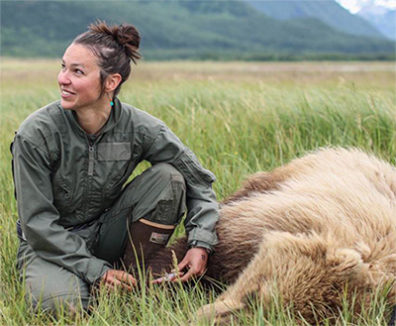
A small seaplane drops her off and flies back toward civilization, leaving Joy Erlenbach there among the bears and the wild.
Erlenbach looks for a place to set up camp as she hikes through Alaska’s Hallo Bay. Swarms of bugs fill the salty air. On one side, miles of sandy beach stretch along the shore undisturbed. On the other, towering, snow-covered volcanoes poke into the sky as dozens of grizzly bears graze below in an open meadow.
This is grizzly country — with no signs of humans, no roads and no trails leading into it. Erlenbach knows that if anything goes wrong, she could be days from help.
Erlenbach, a bear biologist and Ph.D. candidate in environmental studies at Washington State University, is there to study the bears. Yet before that first research trip in June 2015, she had never lived with formidable, 1,000-pound predators in the wild before.
“All of the sudden,” Erlenbach says, “my life revolved around getting along with bears.”